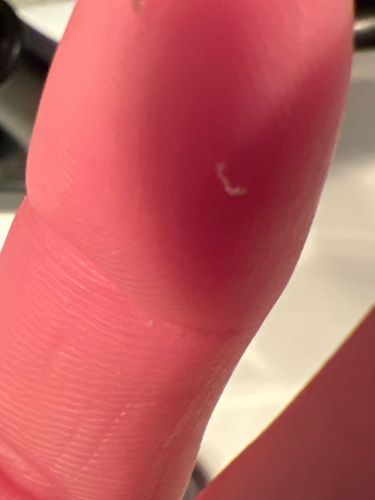It is not possible to definitively identify the exact species of this tiny white worm or larva from the provided image. It could be a variety of organisms, possibly a nematode, a small larval insect, or even lint or debris. Further microscopic examination would be needed for a precise identification.
Scientific Name: Unknown
Order & Family: Unknown
Size: Based on the image relative to a human finger, it appears to be very small, likely in the range of 1-3 millimeters.

Natural Habitat
Given the lack of specific identification, the habitat is unknown. Many small worms and larvae are found in soil, water, decaying organic matter, or sometimes as parasites of plants or animals.
Diet & Feeding
Unknown, as the specimen cannot be identified. Diets for small worms and larvae vary widely depending on the species and can include bacteria, fungi, decaying organic matter, plant tissues, or other small organisms.
Behavior Patterns
Unknown due to lack of identification. Small worms and larvae typically exhibit simple behaviors such as wriggling for locomotion, feeding, and growing through various stages.
Risks & Benefits
Without identification, it is impossible to determine specific risks or benefits. Most small worms are harmless, but some can be agricultural pests, parasites of humans or animals, or beneficial decomposers. It is equally possible this is inanimate debris.
Identified on: 10/26/2025